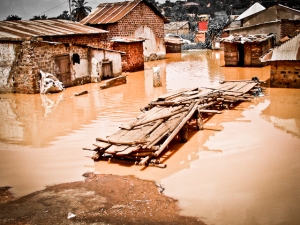5 October 2011

Investment in water and sanitation in the rapidly urbanising cities of the developing world is key if we are to avoid uncontrollable poverty and ever worsening slums, says WaterAid in a news report.
“If we continue the way, we are the gross inequality between rich and poor could be almost impossible to reverse. But there is an opportunity to turn things around if we act now.
“Water and sanitation have proved time and time again to be a critical factor in health and economic development.
Cities in the developing world are expected to double in population size every 15 years, and two thirds of the world’s population will live in urban areas by 2030. The vast majority of these people will end up living in unplanned slums, with little or no access to fundamental services such as water, sanitation and electricity.
Water and sanitation are fundamental to health and development, especially in densely packed urban areas, where outbreaks of diseases such as cholera can quickly turn into epidemics. At present the diarrhoeal diseases caused by a lack of safe water and sanitation are the biggest killers of children under 5 in Africa, more than HIV/Aids, malaria and measles combined. In South Asia it is the second biggest killer.
Current investment into water and sanitation in the slums is inadequate and is failing to reach the poorest and most vulnerable people. Only 6% of World Bank sanitation-related commitments from 2000-2005 went to slums, with the vast majority going to more established urban areas. The manifesto advises that to tackle urban poverty, the very poorest people need to be at the heart of water and sanitation investments and planning. They should also be encouraged to participate in the design and implementation of these plans.
References:
